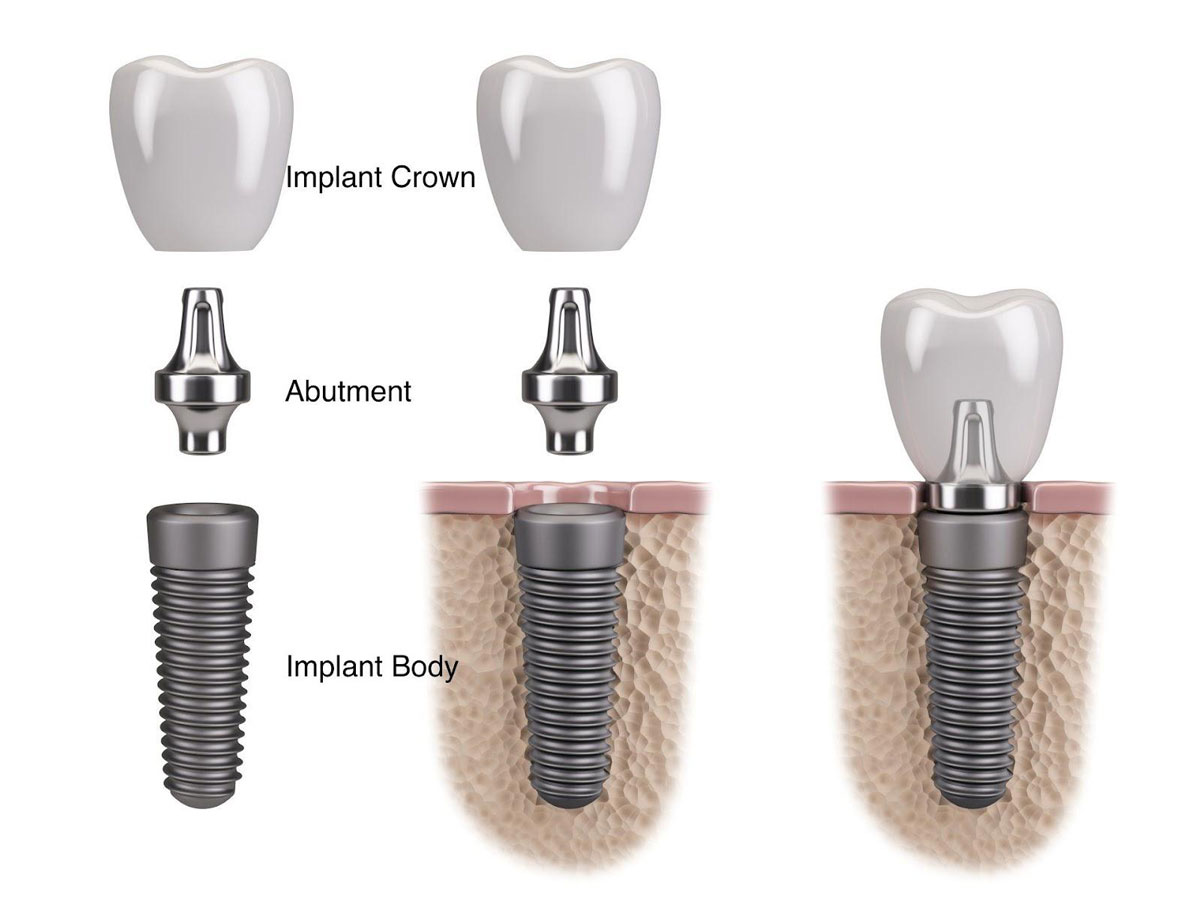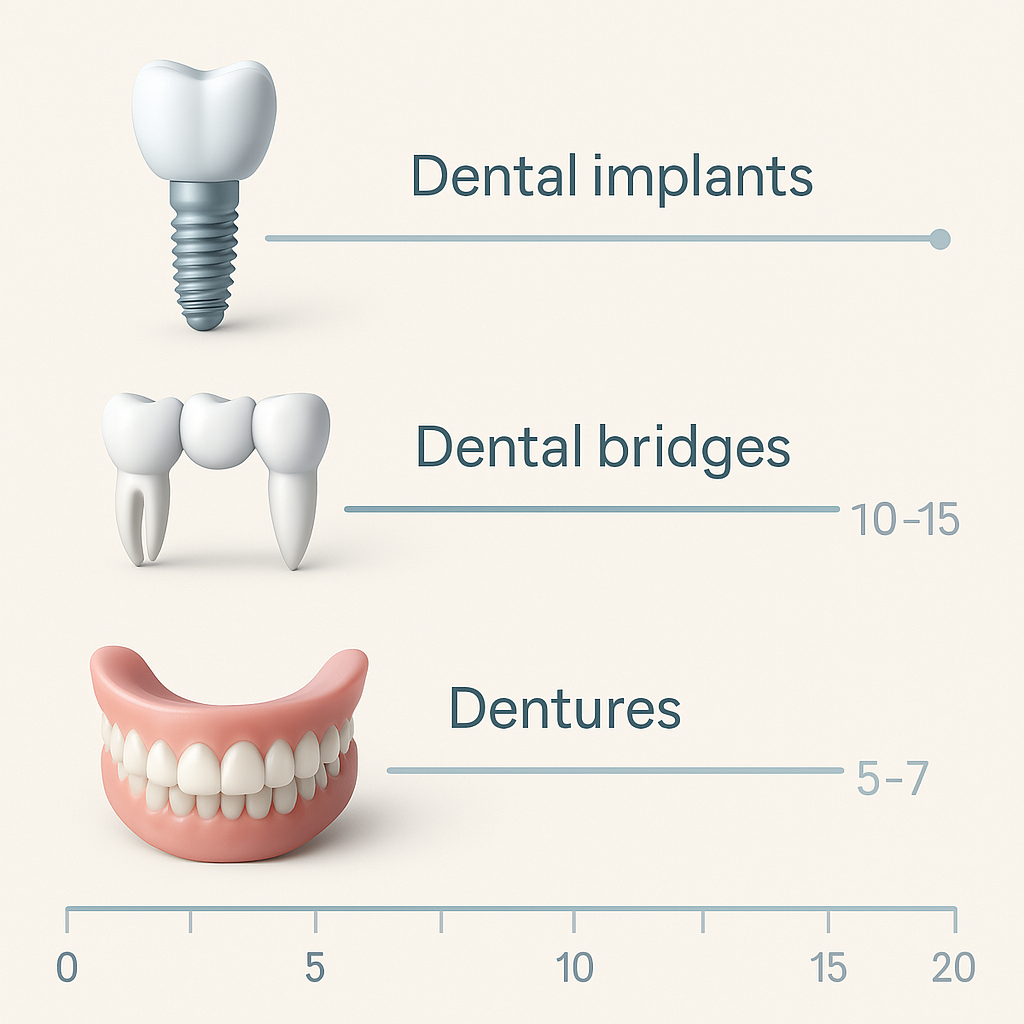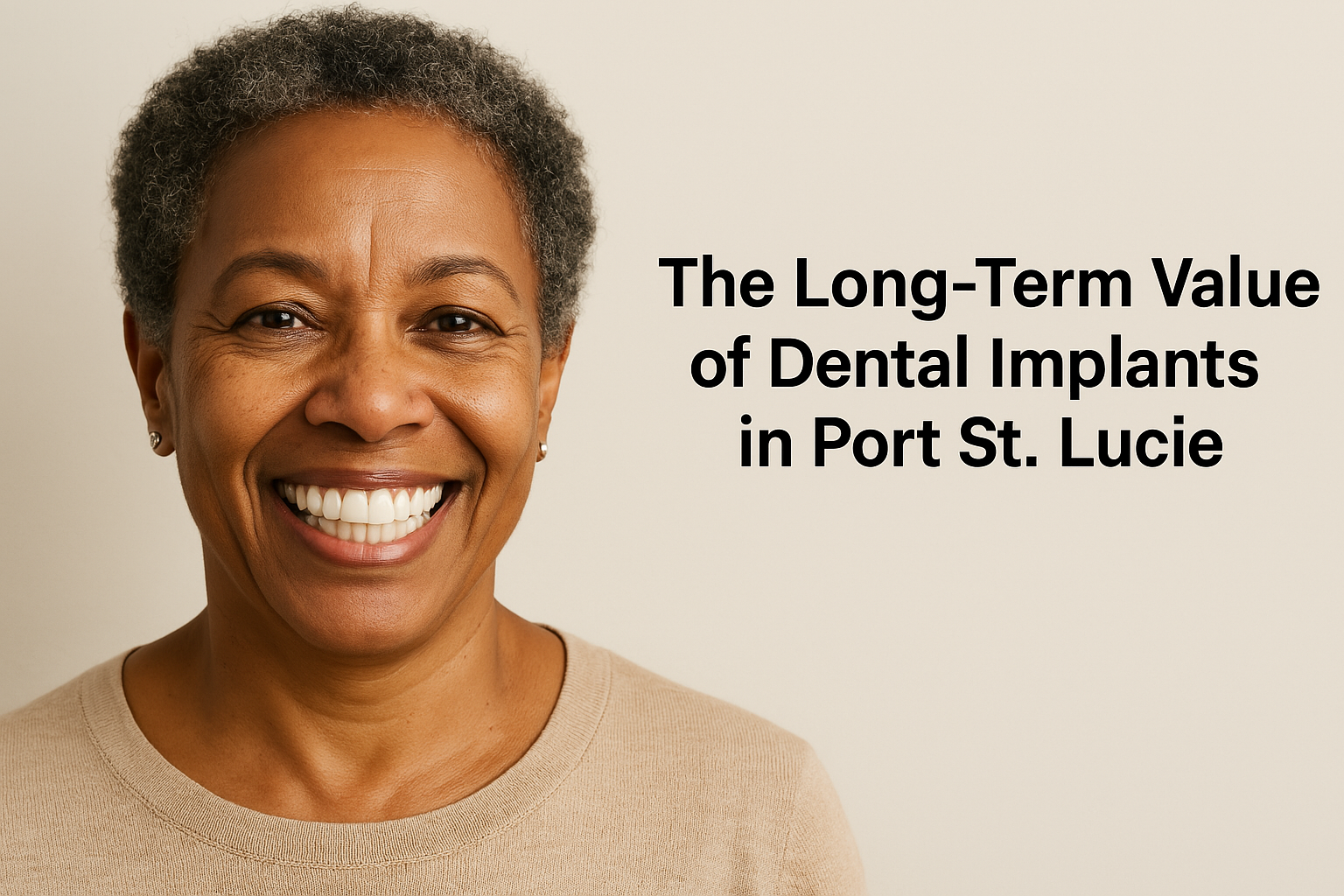When faced with the need to replace missing teeth, residents of St. Lucie, Stuart, Palm City, and Jensen Beach often experience sticker shock at the initial cost of dental implants compared to alternatives like bridges or dentures. The immediate price difference can be substantial, leading many to choose what appears to be the more economical option.
However, at St. Lucie Center of Cosmetic Dentistry, Dr. Hans Almanzar regularly counsels patients to consider the bigger picture—the true long-term value that dental implants provide over a lifetime. This comprehensive analysis reveals why implants, despite their higher upfront cost, often represent the wisest financial decision and the best investment in your health and quality of life.
This detailed guide examines the economic and health factors that make dental implants the superior long-term value for residents of St. Lucie County and surrounding communities.
In This Article:
- Understanding the Initial Investment in Dental Implants
- Cost Comparison: Implants vs. Bridges vs. Dentures
- Replacement Frequency and Associated Costs
- Hidden Expenses of Alternative Tooth Replacement
- Long-Term Health Benefits with Economic Impact
- Quality of Life Considerations for Port St. Lucie Residents
- ROI Analysis: When Do Implants Begin to Pay Off?
- Financing Options for St. Lucie County Patients
- Patient Experiences: Long-Term Value Testimonials
- Frequently Asked Questions About Implant Value
Understanding the Initial Investment in Dental Implants
Breaking Down the Costs of Quality Implant Treatment
When St. Lucie County residents consider dental implants, they're often focused on the initial price tag, which is undeniably higher than alternatives like bridges or dentures. However, understanding what this investment covers helps put the cost in perspective.
According to the American Academy of Implant Dentistry, dental implants represent the most advanced tooth replacement solution available, involving specialized training, premium materials, and sophisticated technology. The investment reflects not just the materials used but the expertise required to place them properly for optimal long-term results.
While the upfront cost of a single dental implant in the Port St. Lucie area typically ranges from $3,000-$5,000, it's important to understand that this represents a one-time investment for a solution designed to last decades or even a lifetime with proper care.

The three components of a dental implant restoration: implant, abutment, and crown
What Your Implant Investment Covers
- Diagnostic Imaging – 3D scans and comprehensive planning
- Surgical Procedure – Precise implant placement by a skilled professional
- Premium Materials – Medical-grade titanium or zirconia implants
- Custom Abutments – Connectors designed for your specific anatomy
- High-Quality Restorations – Custom-crafted crowns, bridges, or dentures
- Temporary Restorations – When needed during the healing phase
- Follow-up Care – Multiple appointments to ensure proper healing
- Specialist Expertise – Years of advanced training and experience
- Cutting-Edge Technology – State-of-the-art equipment for precision placement
- Laboratory Work – Custom fabrication of final restorations
According to a comparative cost analysis published in the International Journal of Oral & Maxillofacial Implants, the initial cost difference between implants and alternatives actually narrows considerably when viewed over a 20-year time frame, primarily due to the durability and longevity of implant treatment compared to the replacement and maintenance costs of other options.
"When discussing investment with my Stuart and Port St. Lucie patients, I often use the analogy of comparing a high-quality appliance to a budget model. The premium option costs more initially but performs better, lasts longer, and ultimately provides better value. Dental implants are the premium option in tooth replacement—they cost more upfront but deliver unmatched benefits and durability that typically make them more economical over time."
Cost Comparison: Implants vs. Bridges vs. Dentures
Analyzing Initial and Lifetime Expenses
To truly understand the economic value of dental implants for residents of Port St. Lucie, Stuart, and Palm City, we need to compare both initial costs and projected lifetime expenses of different tooth replacement options.
| Treatment Option | Initial Cost Range | Expected Lifespan | Replacements Needed (30 yrs) | Estimated 30-Year Cost |
|---|---|---|---|---|
| Single Dental Implant | $3,000 – $5,000 | 25+ years to lifetime | 0-1 crown replacement | $3,500 – $6,500 |
| Dental Bridge (3-unit) | $2,000 – $4,000 | 5-15 years | 2-6 replacements | $6,000 – $24,000 |
| Partial Denture | $1,000 – $2,500 | 5-7 years | 4-6 replacements | $5,000 – $15,000 |
| Full Dentures (per arch) | $1,500 – $3,000 | 5-10 years | 3-6 replacements | $6,000 – $18,000 |
| Implant-Supported Full Arch | $15,000 – $28,000 | 25+ years (implants) 10-15 years (prosthetics) | 0 implants 1-2 prosthetic replacements | $20,000 – $35,000 |
Data from the American Dental Association (ADA) and a 2023 study in the Journal of the American Dental Association support these projections, showing that while implants have higher initial costs, their exceptional longevity and minimal maintenance needs often result in lower total expenditures over decades of use.
Key Cost Insight
A critical factor often overlooked in cost comparisons is the impact of alternatives on adjacent teeth. Traditional bridges require grinding down healthy adjacent teeth, which increases their risk of future problems requiring additional treatment. According to research published in the Journal of Dental Research, up to 30% of teeth prepared for bridges require root canal treatment within 5-7 years, adding $1,000-$1,500 per affected tooth to the lifetime cost of bridge treatment.
Replacement Frequency and Associated Costs
The Hidden Expense of Recurring Treatments
For Jensen Beach and Palm City residents evaluating tooth replacement options, the frequency of replacement is a critical factor that substantially impacts the total lifetime cost of each solution.
While the initial cost of dental implants may seem high, their exceptional durability means they rarely need replacement. According to a landmark 20-year study published in the Clinical Oral Implants Research journal, modern dental implants demonstrate success rates of over 95% at the 20-year mark.
In contrast, traditional bridges typically last 5-15 years, with an average lifespan of about 10 years according to the American Academy of Implant Dentistry. This means that during a 30-year period, a patient might need to replace a bridge two to three times, each replacement costing roughly the same as the original.

Timeline showing the replacement frequency of various tooth replacement options
Factors Affecting Replacement Frequency
- Material Durability – Implants use biocompatible titanium or zirconia that integrates with bone
- Structural Integrity – Implants provide independent support without stressing adjacent teeth
- Resistance to Decay – Implants are impervious to cavities, unlike natural teeth supporting bridges
- Bone Preservation – Implants stimulate bone, preventing deterioration that compromises other solutions
- Wear Resistance – Modern implant crowns use highly durable materials with exceptional wear properties
- Independence – Each implant functions independently, so a problem with one doesn’t necessarily affect others
The Compound Effect of Replacement Costs
The financial impact of multiple replacements becomes particularly evident when considering inflation. Dental treatment costs have historically increased at a rate of approximately 5% annually, according to data from the ADA Health Policy Institute.
This means that a bridge costing $3,000 today might cost around $3,800 when replaced in 10 years and nearly $5,000 when replaced again 10 years later. By contrast, an implant placed today may only require a crown replacement (approximately 1/3 of the initial cost) after 15-20 years, representing significant long-term savings.
The Journal of Prosthetic Dentistry published a comprehensive cost analysis that found even when considering the higher initial investment, dental implants typically become the more economical option between years 5-10, with the cost advantage increasing substantially in each subsequent decade.
I was initially hesitant about choosing implants due to the higher upfront cost compared to a bridge. Dr. Almanzar at St. Lucie Center of Cosmetic Dentistry showed me the projected costs over 20 years, factoring in replacements and maintenance. I realized the implant would actually save me money long-term while providing better function. Now, 12 years later, my implant is still perfect while several friends who chose bridges are already on their second replacement and have spent much more than I did.
- Richard M., Palm City
Long-Term Health Benefits with Economic Impact
How Implants Reduce Future Healthcare Costs
Beyond the direct comparison of treatment costs, dental implants offer significant health benefits that translate into economic advantages for Jensen Beach and Stuart residents.
Research published in the British Dental Journal found that patients with stable, functional tooth replacements experience fewer digestive issues, better nutrition, and improved overall health compared to those with compromised dental function.
According to the Mayo Clinic, optimal oral health is linked to reduced risks of serious conditions including heart disease, pneumonia, and complications of diabetes—all of which carry substantial medical costs.





